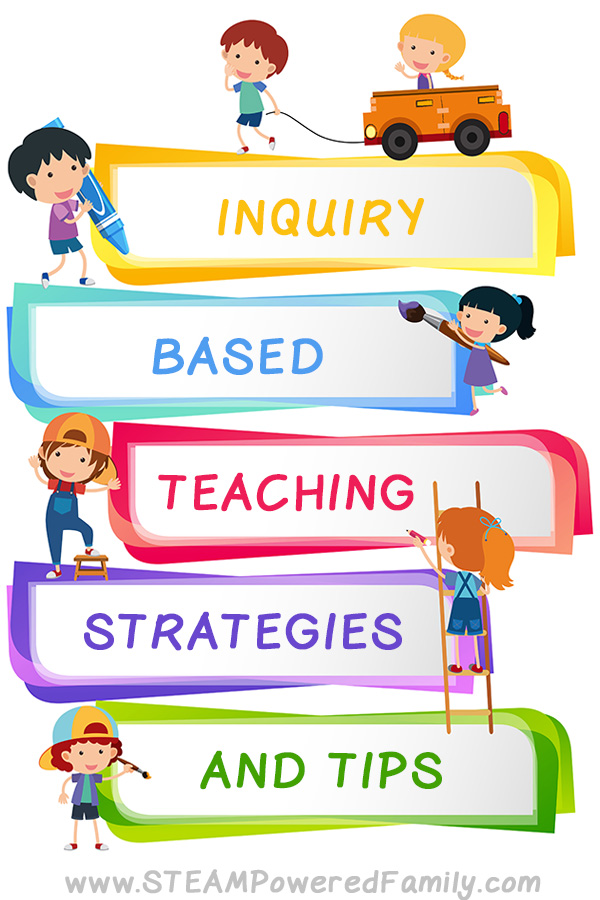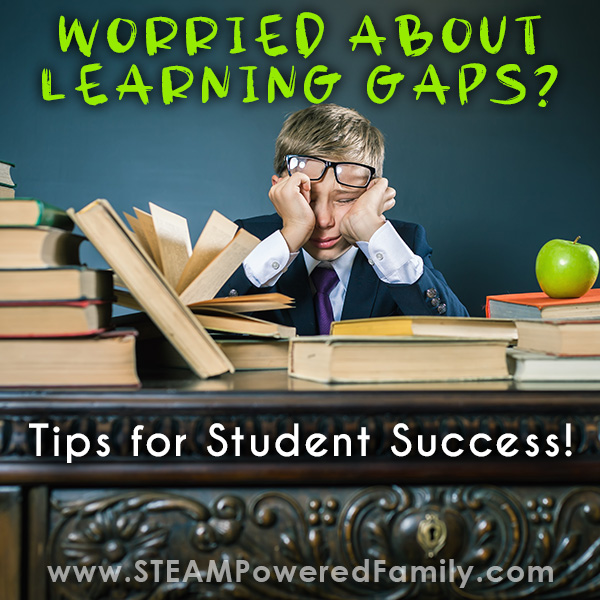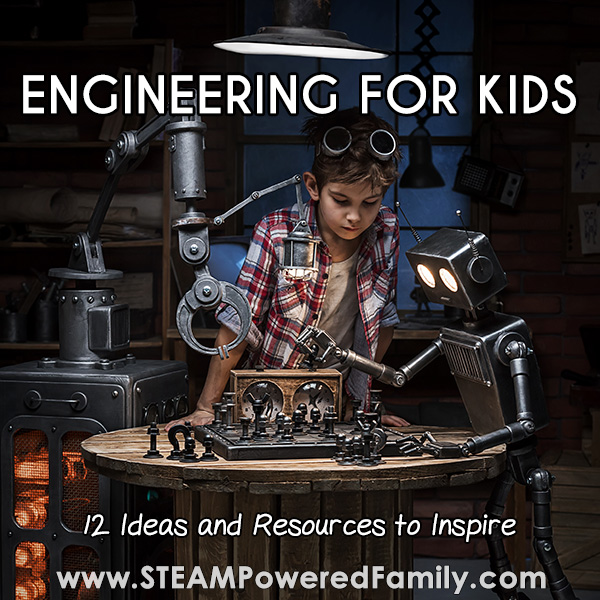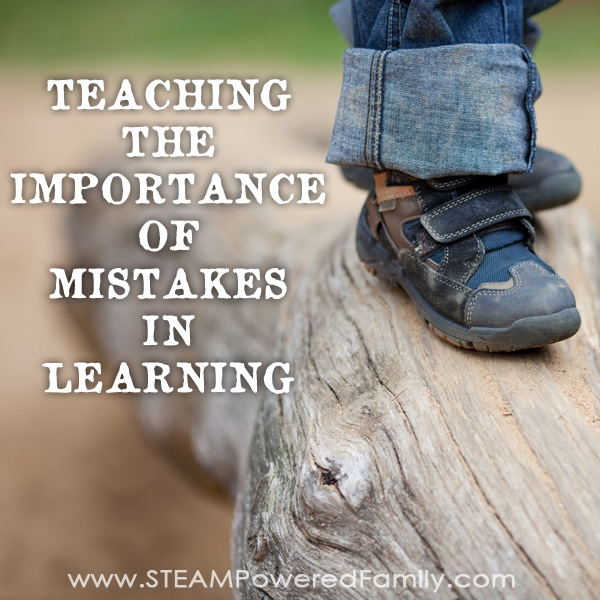4 Powerful Inquiry Based Teaching Strategies
Inquiry based teaching strategies are a powerful tool for educators looking to connect with their students and apply STEM principles. But when first using these strategies. some students will really struggle with the free form nature that STEAM learning can take. The lack of structure can be intimidating and worrisome for those used to the step by step nature normally used to teach school topics. Especially if they are normally instructed through each step and not allowed to experiment or explore. For these students this type of learning can be difficult at first, but with some practice they will soon master this powerful technique.
Inquiry Based Learning Strategies
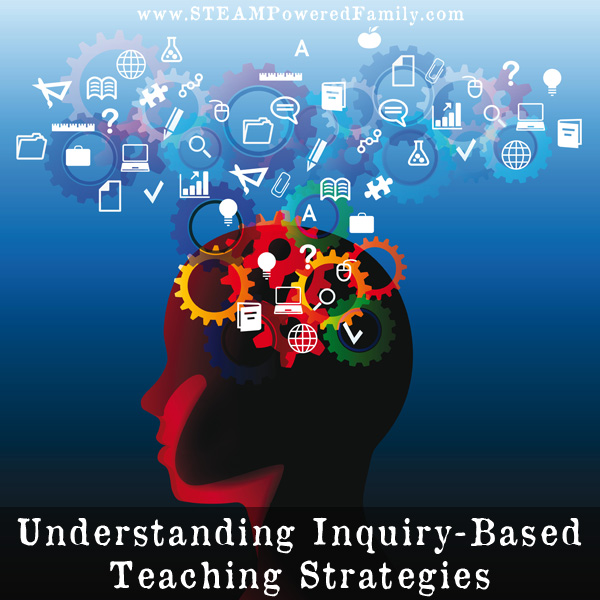
What is Inquiry Based Learning?
Inquiry-based learning is about triggering curiosity and fostering critical thinking skills. It is about finding those things that ignite a child’s passion and excitement, and drives them to want to learn more. By embracing and encouraging inquiry based learning we build a love of learning in students that will last a lifetime.
To foster this educational growth, keep in mind the 4 different types of inquiry instruction and use the one most appropriate for your students, project and situation.
Structured Inquiry
Structured Inquiry is along the line of traditional teaching methods. The teacher leads the students as they work through the process as a class together. Let’s use a lesson in Ancient Egypt as an example, where the STEM lesson involves building catapults. With structured inquiry, the teacher gives the lessons, then all the materials, with detailed instructions they use as a class to build their catapults together. This is where many people find themselves when doing STEAM but a long term goal should be to work through the other approaches to encourage children to develop their skills as learners and pilots in their learning journey.
Controlled Inquiry
Controlled Inquiry is done within a framework established by the teacher. The teacher provides the context, starting ideas, tools and perhaps even some goals. Then the students apply what they are given and move through the process steps. In this approach the teacher may let the students design and build their own catapults, using their own ideas and inspiration. Samples or ideas may be offered, but the students are free to create their own designs, use their imagination and be creative.
As part of this type of inquiry specific end goals may be specified. For example, the catapult may need to hit a specific target at a set distance, or be a specific size. This limits the students in some ways, but can also foster some incredibly imaginative critical thinking and problem solving skills.
Guided Inquiry
Guided Inquiry involves the teacher choosing the topic or questions, then the students are left to develop their own methods of inquiry and processes for moving through concepts. With our example, the teacher may teach concepts of engineering and warfare in Ancient Egypt. From there, students research and build their choice of items from the time period, they are not limited to building a catapult. Perhaps they want to build a model of a pyramid or a ship, or maybe explore creating their own paper and ink and drawing hieroglyphs.
Due to the freedom and independent approach used in Guided Inquiry, students may also chose to do their projects in a different way. Instead of building and engineering, perhaps they want to create a presentation, develop engineering drawings instead of constructing a catapult, or even do a video report.
Free Inquiry
Free Inquiry allows the students to take ownership over their learning, including topic selection, questions, methods and goals. In this instance, the teacher lets the students chose whichever ideas they wish under the main umbrella topic of Ancient Egypt. They can delve into the topic in any way they desire and explore the concepts and ideas that appeal to them. This requires a lot of self-discipline and comfort with self-directed learning. It is best to wait until the students are comfortable with student led learning before starting free inquiry.
Throughout my children’s education, Free Inquiry has always been my goal as part of my homeschool. This technique has been especially powerful for my gifted child. Watching the growth and development that occurs when a student can take ownership of their education and chase their passions is something really magical to witness.
When Strategies Start To Fail
Don’t be afraid to go from one level to another, even in the middle of a project. Remember STEAM and inquiry strategies are adaptable. Feel free to pivot, and take new directions as needed. The goal is learning, not following a set path. These are not set in stone, adapt as needed to suit your needs.
It is also important to remember that in order to succeed in Inquiry Based Learning students will need a solid base of knowledge in the subject matter. Lessons and teachings of core principles will still need to happen to ensure success.
Students will also need time to learn key skills such as research, critical thinking, problem solving and even team work. These are all skills that may require explicit instruction, then mastery can come with practice and time.
Learning How To Do Inquiry Based Learning Is Key
Learning how to do problem or inquiry based learning is an important part of the process. Teachers should not expect children to intuitively know how to be self-motived learners who can embrace the freedom of these approaches. At least not at the beginning. As the teacher we still need to be there to support and help students. Sometimes just becoming comfortable with new processes or learning technique is the most important lesson of the day. Self confidence in one’s ability to learn is the key to empowering a student to become a lifelong learner. Don’t underestimate the importance of spending time teaching children how to learn, how to take ownership of their learning, and also how to work as a team.
Note: Working as a team is different from working in a group. Working as a team encourages each member to bring their best strengths and skills to the table, then share those strengths. Working this way together, the whole team becomes stronger and more efficient. The ability to work in a team is important, and a skill that needs to be learned by all students. It is also something important for moving into the workforce. STEAM activities and inquiry based learning can be a great tool for learning effective teamwork skills and individual skill mastery.
Evaluating Inquiry Based Learning
Whether you are using inquiry based learning as part of your homeschooling or in a classroom, learning how to evaluate and grade this type of learning requires a shift in the way grading is usually conducted. Test based evaluation and standards simply no longer apply.
With inquiry based learning, the process and journey is just as important if not more important than the outcome. This provides a richness to the educational experience but also a challenge for educators who rely on tests and quantitative evaluation.
With inquiry based learning it can be nearly impossible to evaluate creativity, critical thinking, inventiveness and exploration. But it can be done.
Start by providing insights and feedback throughout the process. Challenge students to stretch more, apply their critical thinking skills in new ways, and explore potential challenges in new ways. Credit students with how they grow and learn individually through the process.
Use qualitative tools rather than quantitative tools to evaluate. Assess engagement and effort, use reflection tools and problem logs, Socratic discussion and even surveys and self assessments.
When evaluating student understanding and learning look for key signs such as:
- appropriate use of vocabulary,
- the ability to exchange ideas effectively and clearly,
- their ability to problem solve or present their topic in a way that is supported by explanation, insight, and evidence.
Consider building a portfolio to demonstrate knowledge and understanding. This can be an incredible tool for students to see how much they have accomplished.
Inquiry Based Teaching Strategies tie very strongly into STEM teaching principles. By fostering a love of learning and growth in students, it enables them to become owners of their learning
